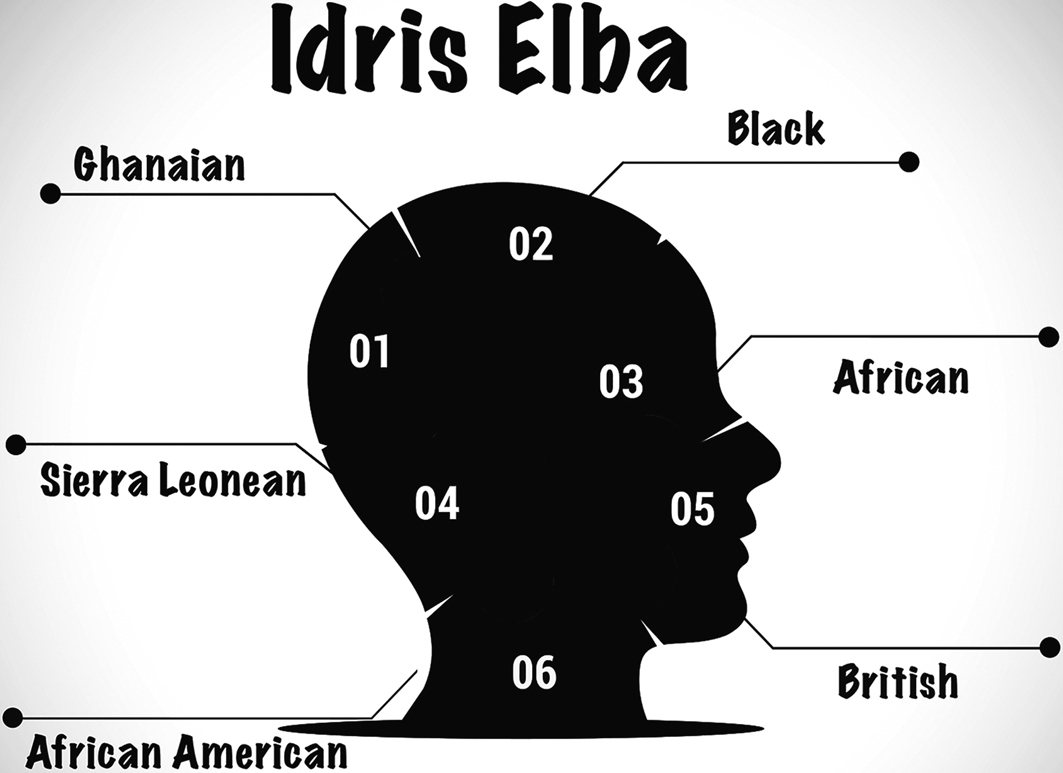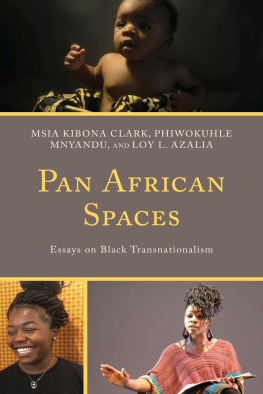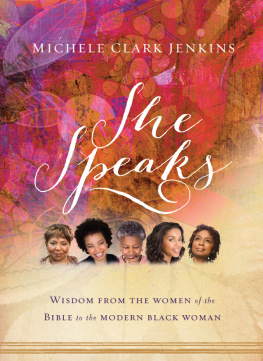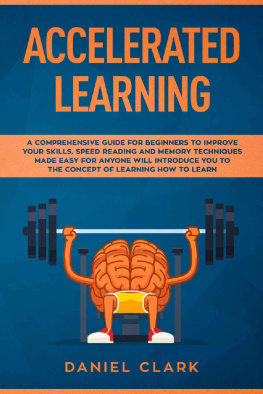Clark Msia Kibona - Pan African Spaces
Here you can read online Clark Msia Kibona - Pan African Spaces full text of the book (entire story) in english for free. Download pdf and epub, get meaning, cover and reviews about this ebook. publisher: Rowman & Littlefield Publishing, genre: Politics. Description of the work, (preface) as well as reviews are available. Best literature library LitArk.com created for fans of good reading and offers a wide selection of genres:
Romance novel
Science fiction
Adventure
Detective
Science
History
Home and family
Prose
Art
Politics
Computer
Non-fiction
Religion
Business
Children
Humor
Choose a favorite category and find really read worthwhile books. Enjoy immersion in the world of imagination, feel the emotions of the characters or learn something new for yourself, make an fascinating discovery.
- Book:Pan African Spaces
- Author:
- Publisher:Rowman & Littlefield Publishing
- Genre:
- Rating:5 / 5
- Favourites:Add to favourites
- Your mark:
- 100
- 1
- 2
- 3
- 4
- 5
Pan African Spaces: summary, description and annotation
We offer to read an annotation, description, summary or preface (depends on what the author of the book "Pan African Spaces" wrote himself). If you haven't found the necessary information about the book — write in the comments, we will try to find it.
Pan African Spaces — read online for free the complete book (whole text) full work
Below is the text of the book, divided by pages. System saving the place of the last page read, allows you to conveniently read the book "Pan African Spaces" online for free, without having to search again every time where you left off. Put a bookmark, and you can go to the page where you finished reading at any time.
Font size:
Interval:
Bookmark:

Pan African Spaces
Pan African Spaces
Essays on Black Transnationalism
Edited by
Msia Kibona Clark, Phiwokuhle Mnyandu,
and Loy L. Azalia
Lexington Books
Lanham Boulder New York London
Published by Lexington Books
An imprint of The Rowman & Littlefield Publishing Group, Inc.
4501 Forbes Boulevard, Suite 200, Lanham, Maryland 20706
www.rowman.com
6 Tinworth Street, London SE11 5AL, United Kingdom
Copyright 2019 The Rowman & Littlefield Publishing Group, Inc.
All rights reserved. No part of this book may be reproduced in any form or by any electronic or mechanical means, including information storage and retrieval systems, without written permission from the publisher, except by a reviewer who may quote passages in a review.
British Library Cataloguing in Publication Information Available
Library of Congress Cataloging-in-Publication Data Available
ISBN 978-1-4985-8192-9 (cloth : alk. paper)
ISBN 978-1-4985-8193-6 (electronic)
 The paper used in this publication meets the minimum requirements of American National Standard for Information SciencesPermanence of Paper for Printed Library Materials, ANSI/NISO Z39.48-1992.
The paper used in this publication meets the minimum requirements of American National Standard for Information SciencesPermanence of Paper for Printed Library Materials, ANSI/NISO Z39.48-1992.
Printed in the United States of America
Contents
Nenelwa Tomi
Tolulope F. Odunsi, Esq
Msia Kibona Clark
Carolina Nv Daz San Francisco
Sharony Green
Afua (Rachel) Ansong
Shingi Mavima
Terza Alice Silva Lima-Neves
Margaret Eva Salifu
Nana Afua Y. Brantuo
Zo Gadegbeku
Yelena Bailey
Mekdela Ejigu
Semien Abay
Gabriel Peoples
Sayuni Brown
Eugene M. Bope
Tafadzwa Zvobgo
Shelvia English, Dayne Hutchinson, and Kat J. Stephens
Cassandra Dr. Cass J. St. Vil
Courtney Pierre Joseph
Keisha V. Thompson
Maurisa Li-A-Ping
Jessica Omilani Alarcn and Indhira Serrano
Ryan Mann-Hamilton
Anthony Curtis Polanco
Ariana A. Curtis
Krista L. Cortes
What does it mean to be Black and bicultural? Or to inhabit multiple Black or African cultural spaces? What are some of the complex ways people of African descent identify as African, African American, Black, Coloured, and so on? There has been a lot of literature on the politics around racial identity, and the experiences of people of biracial heritage. There has also been a lot written on second-generation immigrants living in Europe and the United States, and their navigation of host and home cultures. What about those who have one primary racial identity, and multiple cultural identities? This book centers on the experiences of people who self-identify as Black, and who navigate multiple Black cultural spaces, to varying degrees, over time. This includes individuals with one parent from Africa and another parent from the African Diaspora, individuals based in the Diaspora with parents from different parts of Africa, individuals with both parents born in Africa or the African Diaspora who grew up in a country other than that of their parents birth, and any of the other ways peoples of African descent identify with multiple Black cultural backgrounds. The contributions in this book represent experiences of being bicultural that differ in many ways from experiences of being biracial, or a second-generation immigrant.
Racial identity and ethnic or cultural identity are related. Individuals may be biracial, and identify as Black, while negotiating multiple Black cultural identities. Likewise, the experiences of being a second-generation Black immigrant may necessitate a navigation of host and heritage culture, while also requiring the consideration of multiple Black cultural identities.
The experiences and identities of bicultural Blacks contribute to dialogues around identity, and the internal and external factors that impact how one self-identifies. There are many similarities in how individuals form their identities, whether those identities are based on racial identity, cultural identity, .
The above chart represents the various identities of actor Idris Elba, who grew up in England, to parents who were Sierra Leonean and Ghanaian. Elbas identity moves between multiple spaces, as he is British, Diaspora Black, and African. Idris Elba, Idrissa Akuna Elba, or DJ Big Dris, aside from his acting roles Elba has presented us with various clues in his public life to his familiarity with multiple cultural identities. There are in fact multiple factors that go into a persons identity. Some of those are self-chosen, others are imposed. According to Omi and Winant (2016), race and ethnic identities are among the first categories in which we place people. This process provides clues to the identities of others, and informs our interactions, or racial etiquette with those individuals. Omi and Winant (2016) say that when someones racial or ethnic identity is unclear, or unfamiliar, we are often uncomfortable. According to Omi and Winant (2016), without a racial identity one is in danger of having no identity (pp. 14). The racial or ethnic categories imposed are often determined by someones accent, name, and/or dress. Placement in certain categories often come with social and economic consequences or privileges. For example, Paris has often been praised as a city where African Americans can escape racial oppression. However, the experiences of African American migrants in Paris, from James Baldwin to Ta Nehisi Coats, differs from the experiences of African migrants in Paris. There is a distinction made between Black people from America and Black people from Africa. The identity imposed of Black people in Paris, based on some of the clues discussed, may determine whether one experiences the racial utopia of Paris, or the oppression found in Paris banlieues (ghettos).

Figure 0.1This Figure Represents the Multiple Identities Someone Like Actor Idris Elba . He was Born with Some of these Identities, While Others have Been Assigned to Him or Were Adopted due to Migration and Cultural Dynamics Locally.
In looking at the theory of bicultural identity integration (BII), there are several psychosocial changes an individual may experience as they operate in multiple cultural spaces, throughout their life. BII deals with the ability to integrate those multiple identities, and to successfully move between those identities (cultural frame switching) (Benet-Martinez & Haritatos, 2005; Chen, Benet-Martinez, & Bond, 2008). A lot of research has been done on self-identification among biracial and bicultural populations, especially second-generation immigrants and their relationships with host and home cultures. In this book, identity is not approached in a dichotomous manner, but as a series of interwoven experiences that influence how one moves between and among new and old identities. The chapters in the book highlight the myriad of ways in which people of African descent identify. Its not simply a conversation between the Diaspora and Africa, identities are being formed by bicultural Blacks whose primary experience is on the African continent. Or bicultural Blacks who represent multiple Diaspora identities.
Moving between cultures, and navigating the cultural dynamics of multiple cultural identities, engenders a level cultural frame switching (CFS). CFS is the practice of moving between cultural contexts, and knowing and exhibiting the appropriate cultural ques in those contexts. In other words, when bicultural individuals change their behaviors and personalities in response to cues in their environment (e.g., language, cultural icons), that is cultural frame switching. Some scholars say CFS is analogous to W. E. B. DuBois theory of double consciousness. DuBois theory of double consciousness presents the presence of multiple selves as a space of conflict. Indeed, for some bicultural Blacks, it is a space of conflict (Clark, 2012). For many bicultural Blacks, the moving between identities and the integration of those identities has produced many different ways in which people self-identify. The thoughts that shape the formation of that identity may emerge from conflict or an inability to integrate multiple cultures or identities. External factors also play a role. For example, the demographics of an individuals community, an individuals exposure to the social and cultural landscapes of different spaces, and racial and ethnic politics in an individuals countries of residence. Parentage, popular culture, and the media also play critical roles in the ways bicultural Blacks shape their identities.
Font size:
Interval:
Bookmark:
Similar books «Pan African Spaces»
Look at similar books to Pan African Spaces. We have selected literature similar in name and meaning in the hope of providing readers with more options to find new, interesting, not yet read works.
Discussion, reviews of the book Pan African Spaces and just readers' own opinions. Leave your comments, write what you think about the work, its meaning or the main characters. Specify what exactly you liked and what you didn't like, and why you think so.











